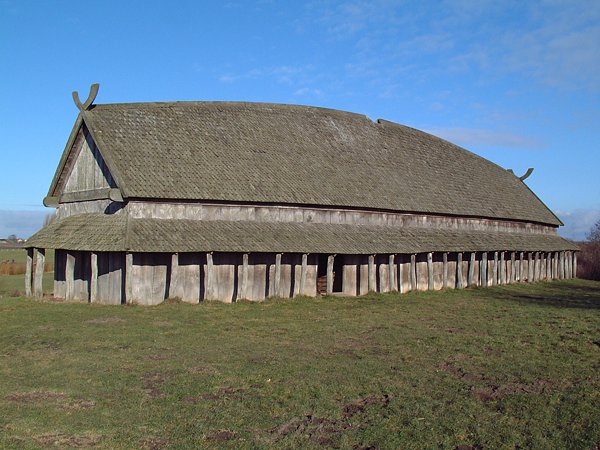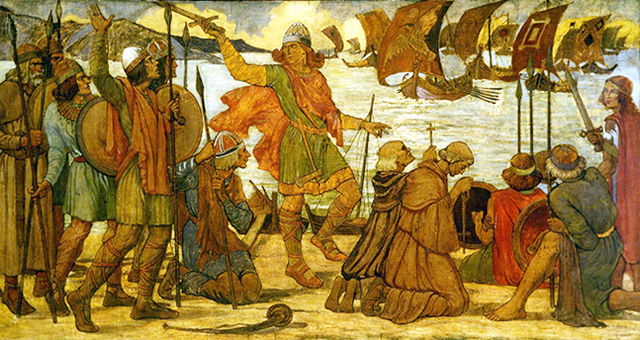Mimir is an obscure figure from Norse mythology, more ancient than Odin himself. His name in Old Norse meant The Rememberer.
Mimir guarded the Well of Wisdom that lay between the roots of the World Tree, which made up the center of their universe. Yggdrasil, also called the World Tree, is an ancient ash tree that unites all of creation.
He was so renowned for his wisdom that the gods sought him out to seek his counsel. Without Mimir’s consent, Odin never would have risen to preeminence among the Norse gods.
Odin found him and asked that he allow him to drink from the Well of Wisdom so that he might become enlightened. Mimir demanded a terrible price: one of Odin’s eyes.
The god agreed, and the wisdom and insight that he gained from the waters of wisdom elevated him above his contemporaries.
Even after this, Odin continued to seek Mimir’s counsel. When Mimir was beheaded during a war of the gods, Odin continued to draw upon Mimir’s wisdom by carrying the head around with him.
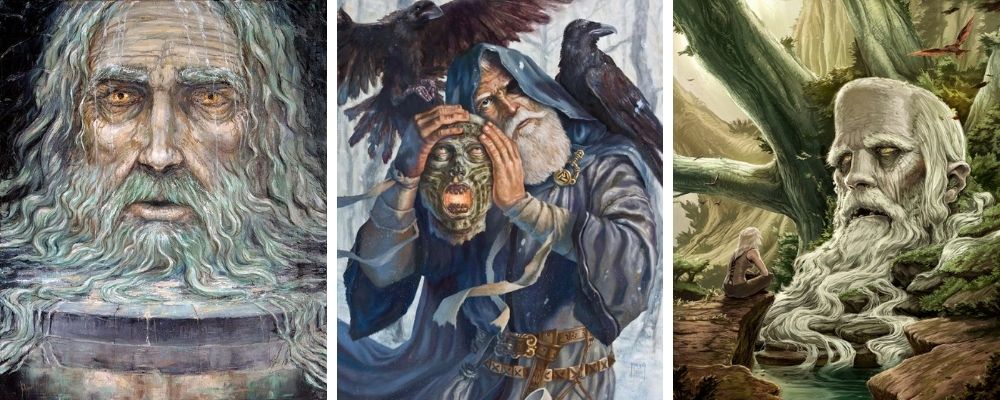
Norse Mythology
Often associated with the Vikings, Norse mythology is the body of myths shared by Norsemen, or North Germanic peoples. Long oral traditions were preserved in Eddic poetry and prose written from the 10th to 13th centuries.
The Old Norse language was spoken throughout Scandinavia from about the 8th to the 15th centuries. After this point, it morphed into more modern languages.
Like the language, Norse mythology is rooted in broader Germanic religious traditions. It was an inexorable part of their culture and their understanding of the world and their place within it.
There were a number of gods and goddesses in the Old Norse religion, and only some were worshiped. Loki, for example, was not worshiped.
He was a prominent figure in their stories. He shaped their understanding of the universe, but there is no evidence of offerings made to him.
Norsemen made sacrifices to their gods – usually animals, such as oxen or boars, but sometimes humans. Spells and divination were common practices. Religious rituals were not restricted to any sort of clergy.
They believed in reincarnation and often named their children after departed family members.
Norse Mythology included many figures that were neither gods nor humans. Many of these were elves and dwarves. Tolkien found a great deal of inspiration in these ancient stories.
There were the Norns, three women who shaped the course of each human’s fate. There were nature spirits and guardian spirits. There were also giants.
Mimir was his own entity, somewhere between a giant and a God. In some traditions, he was Odin’s maternal uncle. He also mentored Siegfried, an ancient hero in Old Norse literature.
Odin relied on his wise counsel so much that he used elaborate magic to resurrect Mimir after he was beheaded. He continued to consult him for advice.
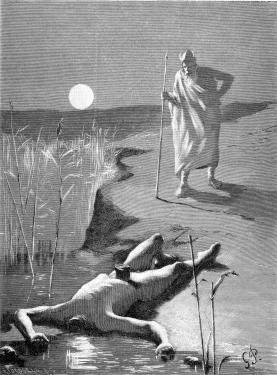
Odin
Odin was a Norse god associated with knowledge, war, victory, sorcery, royalty, healing, and death. He was the son of Bestla and Borr. His wife was Frigg, the goddess of marriage, prophecy, and motherhood.
He was an established god from the very beginnings of recorded history in Europe over 2,200 years ago. Over 170 different names for Odin have been recorded. His name in Old English was Woden, giving us the word Wednesday by way of the Old English word meaning Woden’s day.
Throughout the mythology, he often sought out more and more knowledge – and not just from the Well of Wisdom. He also drank the Mead of Poetry that conferred to its drinkers all the powers of the scholars. He took an active part in the creation of the world and was responsible for creating the first two humans, Ask and Embla.
Odin was always portrayed with one eye, as a result of his deal with Mimir. He rode an eight-legged steed across the sky and was often accompanied by wolves and ravens, who brought him information.
Odin had many sons, the most famous of them being Thor. He was not born of Odin’s wife, but rather of a liaison between Odin and the earth goddess Joro. Thor was the god of thunder and protector of the Earth.
Thor’s hammer was the most common religious symbol of the culture. From the ninth century onwards they were commonly worn around the neck as pendants, possibly in response to the crosses worn by Christians.
Mimir in Poetry and Prose
Mimir features in both the Poetic Edda, a collection of Old Norse poems, and the Prose Edda, an Old Norse textbook written in Iceland during the 13th century.
The Poetic Edda refers to Odin’s journey to the Well of Wisdom and the bargain he struck with Mimir. It also mentions Mimir’s severed head, which Odin turns to for advice. Although the head is decollated, Mimir still retains the power of speech.
In the Prose Edda book Gylfaginning, it is written that Mimir himself drank from the Well of Wisdom and thereby attained great knowledge. The passage explains that the well is located beneath one of the three great roots of the World Tree.
An Old Norse saga called Ynglinga provides one account of the Æsir–Vanir War fought between two factions of Norse gods. Odin leads an army from Asgard to attack the prophetic people of Vanaheim. Eventually, the two sides agree upon a truce, and hostages are exchanged.
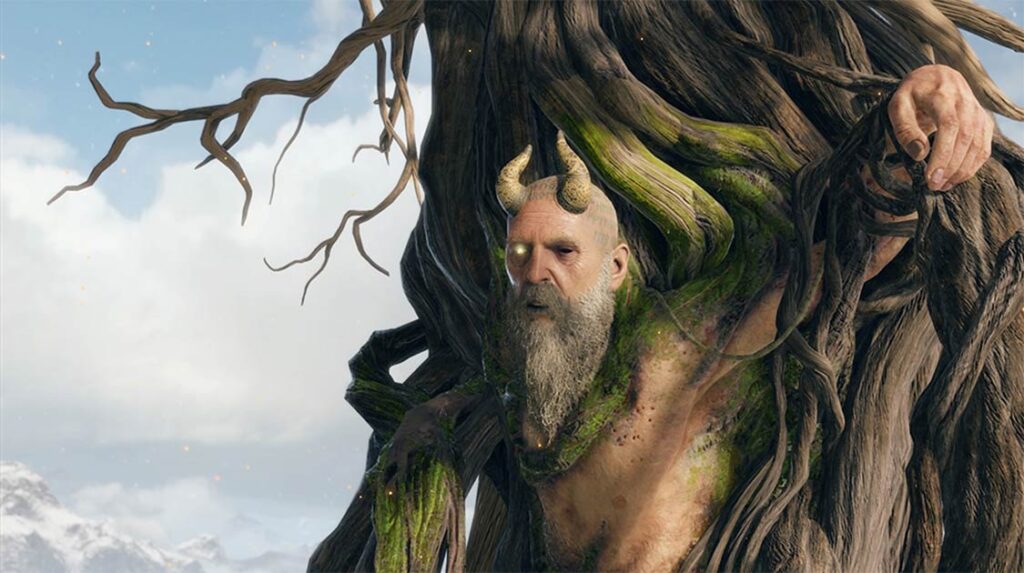
Mimir is sent in exchange for the wisest man in Vanaheim to ensure that both sides continue to cooperate. When relations deteriorate, Mimir is beheaded and his head is sent to Odin.
Undeterred by the death of his favorite advisor, Odin continues to seek Mimir’s counsel. He fills the decapitated head with herbs to embalm it so that it wouldn’t rot.
He then casts spells by chanting magical songs over Mimir’s head so that it will regain its power of speech and Mimir can continue to share his vast knowledge with Odin.
Later in the Ynglinga saga, Odin consults Mimir’s head to learn information from other worlds.
